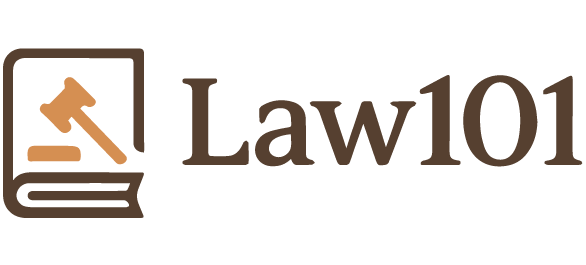Everyday Privacy
Protecting personal information in daily life

Protecting personal information in daily life
Everyday Privacy
Privacy in daily life is no longer just about closing the curtains or keeping a diary locked away. In a world where every tap, swipe, or online interaction generates data, privacy has expanded into a constant negotiation of what information we share and how it is used. Everyday privacy refers to the ability to manage personal information in ordinary activities—from shopping online to checking emails on public Wi-Fi. What makes this topic vital is that the data we expose is not always obvious. It can include names, addresses, browsing behavior, purchase history, location, and even the metadata behind photos or emails. Protecting this information is not about secrecy but about choice: the right to decide who has access to what details about you, when, and for what purpose.
The challenge lies in how invisible data flows have become. Mobile apps request permissions, social media encourages oversharing, and websites place cookies that track browsing habits. At the same time, smart devices at home—from voice assistants to connected fridges—continuously gather information about routines and preferences. Most people engage with these systems without fully realizing how much they reveal or how their information is stored, analyzed, and sometimes sold. This creates a situation where individuals may unknowingly agree to extensive data use simply by clicking “accept” on terms they have not read or cannot understand.
A key issue in everyday privacy is imbalance. Companies and platforms usually hold far more knowledge about users than the users have about how their own data is being processed. This asymmetry means that informed consent is often more theoretical than real, as long documents and complex settings make it difficult for people to meaningfully control their privacy. The risks are tangible: identity theft, financial fraud, targeted manipulation, and long-lasting digital profiles that individuals cannot easily change or delete.
Still, privacy is not only about dangers. It also plays a positive role in trust and autonomy. When individuals know their information is handled responsibly, they are more willing to engage with digital services. This highlights why privacy is not a luxury or optional feature, but a foundation of fair digital relationships. Protecting privacy means balancing convenience with caution, understanding that the small, everyday choices we make—what to share, what to hide, and when to say no—shape our ability to control our personal identity in the digital age.
The key takeaways can be summarized as follows:
- Everyday privacy is about control, not secrecy: deciding what details about yourself are shared, and under what conditions.
- Hidden risks come from ordinary actions: using apps, browsing websites, or accepting terms without reading them often results in data exposure.
- Trust and autonomy depend on privacy: individuals feel safer engaging with services when they know their information is respected and protected.
Practical Approaches to Everyday Privacy
Strengthening everyday privacy requires a proactive mindset. For individuals, this means building habits that minimize unnecessary exposure. Simple steps—like using strong and unique passwords, enabling two-factor authentication, and reviewing privacy settings regularly—create a significant barrier against misuse. Being cautious with what is shared online, disabling location tracking when not needed, and avoiding suspicious links are equally important. Tools such as Virtual Private Networks (VPNs) add another layer of protection when browsing on public connections. Even offline habits matter: shredding sensitive documents, securing physical devices with passcodes, and limiting what information is given in public spaces all contribute to privacy defense.
On the organizational side, businesses and institutions play a crucial role. They must implement transparency by explaining clearly how they use personal data, avoid collecting unnecessary details, and ensure strong safeguards against breaches. Building privacy into the design of products and services from the start—rather than treating it as an afterthought—strengthens trust. Beyond technology, training employees on privacy awareness and conducting regular audits ensure that policies translate into practice.
Ultimately, everyday privacy is not something achieved once and forgotten; it is an ongoing process shaped by choices, awareness, and responsibility. Technology evolves, and so do the strategies for both protecting and exploiting personal information. Recognizing that privacy is central to dignity, freedom, and fairness in modern life is the first step toward preserving it.
Frequently Asked Questions
Everyday privacy often feels abstract until problems arise. To better understand it, here are answers to some common questions that highlight both the challenges and practical solutions.
It refers to the control individuals have over their personal information in daily situations. This includes managing what data is shared online or offline, whether through apps, websites, or routine interactions. It is less about hiding everything and more about choosing what should remain private.
Start by limiting unnecessary sharing on social media, using strong and unique passwords, and enabling two-factor authentication. Adjust privacy settings on devices and applications, and use a VPN when browsing on public Wi-Fi. Small habits make a big difference.
Even if unread, once accepted, these agreements are legally binding. They often include permissions for how your data will be collected, stored, and shared. Ignoring them does not limit their force, which is why awareness and caution are important.
No. While organizations must safeguard data and act transparently, individuals share responsibility. Strong privacy practices require both sides: companies to protect and inform, and individuals to manage their own digital behavior carefully.
Keywords
Everyday Privacy
Personal Data
Digital Footprint
Consent
Data Protection
Transparency
Cybersecurity
Identity Theft
Privacy Settings
Information Control







